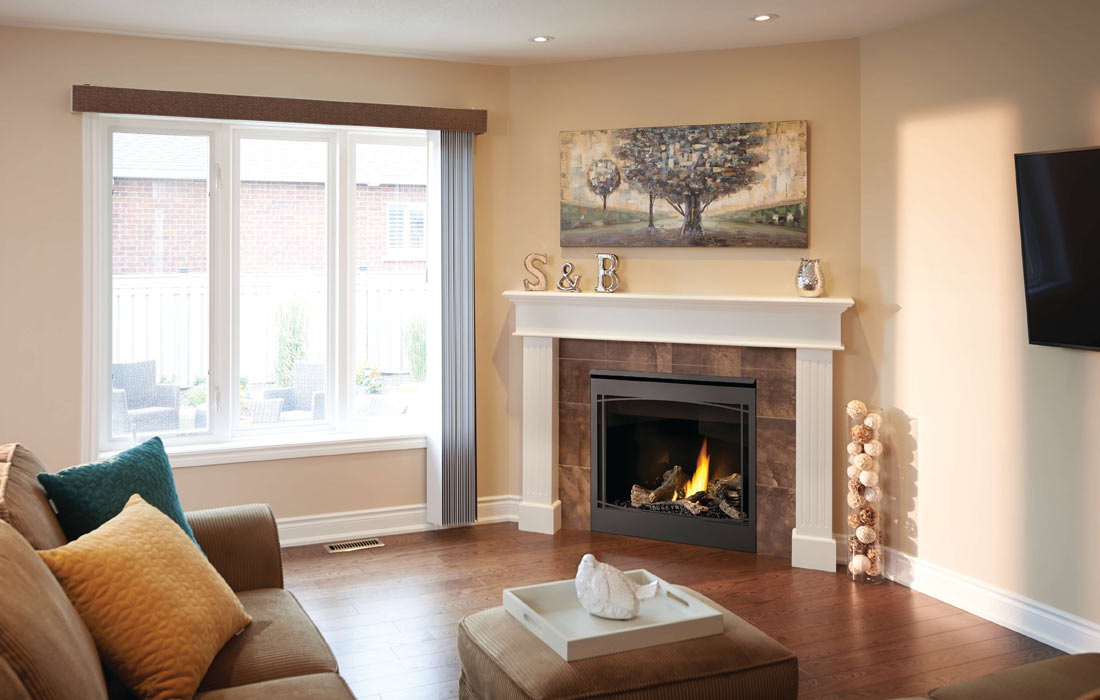Can a Gas Fireplace Cause Carbon Monoxide Poisoning?
Carbon monoxide poisoning can severely damage the human nervous and respiratory systems, as well as the brain and heart. It can sometimes even be fatal, since it deprives the body of oxygen, a vital nutrient critical to proper body functions.
Carbon monoxide poisoning poses a significant health risk to both those living in residential homes and those working in commercial buildings, especially when it’s cold outside and people seek additional sources of heat for warmth.
According to statistics from the Centers for Disease Control and Prevention (CDC): “During 2010–2015, a total of 2,244 deaths resulted from unintentional carbon monoxide poisoning, with the highest numbers of deaths each year occurring in winter months. In 2015, a total of 393 deaths resulting from unintentional carbon monoxide poisoning occurred, with 36% of the deaths occurring in December, January, or February.”
Consequently, knowing what could potentially expose a person to this colorless, odorless and tasteless gas is essential.
YES, GAS FIREPLACES ARE ONE POTENTIAL CAUSE OF CARBON MONOXIDE POISONING.
While there are many potential sources of such exposure, including certain appliances and devices, motor vehicles and wood stoves, gas fireplaces are a common culprit to be aware of.
Remember, carbon dioxide is a byproduct of the oxidation process occurring within the complete combustion of fossil fuels, since these contain elemental carbon and hydrogen. An improperly maintained or ventilated gas fireplace, however, can result in incomplete combustion, creating carbon monoxide, and causing this toxic gas to linger, putting those inside at risk of carbon monoxide poisoning.
Several symptoms of carbon monoxide poisoning—whether from gas fireplaces or other sources, include, but are not limited to:
- Nausea
- Dizziness
- Shortness of breath
- Chest pain
- Headache
- Unconsciousness
If you think you or someone you know has suffered from carbon monoxide poisoning, contact a medical professional immediately.
IF YOU HAVE A GAS FIREPLACE IN YOUR HOME, KEEP THESE PRECAUTIONS IN MIND:
Get Your Fireplace Inspected Every Year
Besides properly cleaning your fireplace yourself on a regular basis, it’s also critical to hire a licensed and trained inspector to evaluate its condition, as well as the chimney. This way, any issues that could cause you or your loved ones harm will be identified and remedied.
For example, the inspector will make sure the vents aren’t blocked—an important task, since poor ventilation could trap carbon monoxide in the space, as aforementioned. He or she will also check for any damaged or dirty parts that need to be addressed. Broken fireplace doors and clogged starters are two other red flags the inspector will keep an eye out for.
Checking for carbon monoxide is another, and it brings us to our next point.
Invest in an Effective Smoke and Carbon Monoxide Detector
Having a smoke and carbon monoxide detector installed in your home is another step to safeguarding it against this deadly gas. A detector will not only alarm you if carbon monoxide is present, but whether any smoke is, too—also protecting against fires.
Furthermore, the security company supplying the smoke and carbon monoxide detector may also provide constant alarm monitoring—alerting you and your loved ones of any carbon monoxide or smoke in your home, as well as the authorities, too.
BSG provides smoke and carbon monoxide detectors, and a variety of fire safety systems, services, and residential security systems, to homeowners in San Antonio and Austin. Request a quote from us today to find out what we can do for you.

